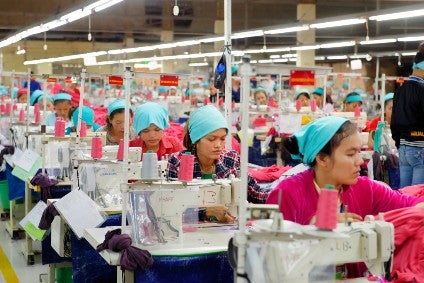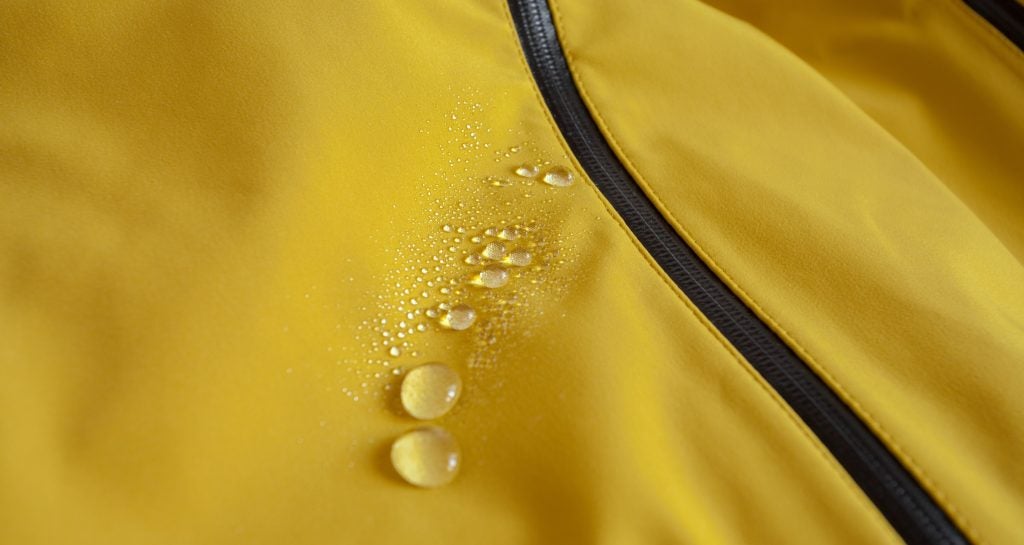
Cambodia’s garment industry, already buffeted by the coronavirus pandemic, is set for a further hit after the European Union decided to suspend duty-free access for some products from 12 August over “systematic” human rights violations. Here, Abby Edge and Sheng Lu from the University of Delaware, analyse the potential impact and possible shift in trade patterns.
In February 2020, the European Union (EU) announced it would partially suspend Cambodia’s eligibility for the EU’s Everything but Arms (EBA) programme due to growing concerns about the country’s human rights records. Established in 2001, the EBA trade initiative provides least developed countries (LDCs), such as Cambodia, with duty-free and quota-free access to the vast EU market for all products except weapons and ammunition. It’s aim is that these LDCs achieve faster economic growth and other social-economic developments through expanded exports.
As the EU represents as much as 45% of Cambodia’s total exports, losing the EBA benefits could be economically detrimental. The Cambodian garment industry is especially vulnerable to the EU policy change, given apparel products currently account for nearly 70% of all Cambodia’s export earnings.
State of Cambodia’s garment industry
Cambodia is a relatively small-sized developing country located in Southeast Asia with a total population of 16 million as of 2018. Its garment industry started to enjoy fast growth in the early 1990s, thanks to new government economic policies that boosted foreign investment and supported the development of the export-oriented manufacturing sector. In 2018, the value of Cambodia’s garment production totalled US$10.79bn, an increase of nearly 70% from a decade earlier.
How well do you really know your competitors?
Access the most comprehensive Company Profiles on the market, powered by GlobalData. Save hours of research. Gain competitive edge.

Thank you!
Your download email will arrive shortly
Not ready to buy yet? Download a free sample
We are confident about the unique quality of our Company Profiles. However, we want you to make the most beneficial decision for your business, so we offer a free sample that you can download by submitting the below form
By GlobalDataSee Also:
Of the 250,000 or so textile and apparel mills currently operating in Cambodia, around two-thirds are garment factories. However, due to limited production techniques and capital availability, apparel producers in Cambodia are still mostly engaged in cut-make-trim (CMT) activities, meaning they rely heavily on imported textile raw material and are only able to make a marginal profit based on low-value-added sewing work.
Like many other developing countries, the vast majority of Cambodia’s garment production is for exports – with these exports also playing a key role in supporting Cambodia’s trade-led economic growth model. As of 2019, as much as 70% of Cambodia’s exports were apparel items. Likewise, around one-third of Cambodia’s manufacturing output currently comes from the garment sector alone.
Further, the export-oriented garment industry is one of the very few job creators in Cambodia, especially for women living in rural areas. According to the International Labour Organization (ILO), as of 2016, the garment industry in Cambodia employed nearly 928,600 workers (almost 79% were female), an increase of 239% from 2007 (Table 1). Even this number, however, could be an underestimation, as official statistics may not take full account of home-based or undocumented workers hired by the garment sector
Patterns of Cambodia’s apparel exports
Cambodia’s apparel exports have enjoyed steady growth in recent decades, reaching US$7.83bn in 2018 – a jump of 256% from US$2.2bn in 2005 (see Table 2). Compared with other leading apparel suppliers, the low production cost is one notable advantage of ‘Made in Cambodia.’ According to industry sources, garments sourced from Cambodia for US and EU fashion brands and retailers are about 20% lower in price than those made in Bangladesh or Vietnam, and around 40% cheaper than those from China. However, due to capacity issues, Western fashion companies have a more limited choice of the type of apparel products they can source from Cambodia, except simple and basic items such as jeans and shirts.
Further, as shown in Table 3, Cambodia’s apparel exports are highly concentrated on the EU and the US markets, which together accounted for 73.4% of the country’s total garment exports in 2019. Notably, around 42.9% of Cambodia’s garment exports went to EU members alone in 2019, making the region the single most important export market. Similarly, between 2015 and 2018, about 25% of Cambodia’s apparel exports went to the United States, with this percentage rising to 30% in 2019. Compared with rival apparel exporting countries in Asia, Cambodia has been less successful in diversifying its export markets. For example, in 2018, only 45% of China’s apparel exports went to the EU and the US combined; while the figures were also lower for India (65%), Vietnam (62%) and Indonesia (68%).
Additionally, Cambodia is facing intense competition in its main apparel export markets. As shown in Table 4, there has been little growth in its share of EU and US apparel imports over the past two decades, remaining as low as 3% as of 2019. For most Western fashion brands and retailers, Cambodia is only one of many sourcing destinations they can choose from.
Potential impact of EU’s suspension of Cambodia’s EBA eligibility
Out of concerns over Cambodia’s “serious and systematic violations of the human rights principles enshrined in the International Covenant on Civil and Political Rights,” the European Commission on 12 February 2020 formally announced the withdrawal of part of the tariff preferences granted to Cambodia under the EBA programme. Starting from 12 August 2020, a select group of Cambodia’s apparel exports to the EU, together with all travel goods, sugar, and some footwear will be subject to the EU’s Most-Favoured-Nation (MFN) tariff rate. The apparel items directly affected by the EBA suspension accounted for around 15% of the value of Cambodia’s total apparel exports to the EU in 2019.
Even the partial suspension of Cambodia’s EBA eligibility could result in significant and lasting negative impacts on its apparel exports to the EU. Notably, like other EBA beneficiary countries, the majority (around 95%) of Cambodia’s apparel exports to the EU currently claim the duty- and quota-free EBA benefits. In comparison, only about 5% of Cambodia’s apparel exports to the EU in 2019 paid the Most-Favoured-Nation (MFN) import duties, which were at the rate of 11.5% on average (see Table 5). For those apparel categories directly targeted by the EBA suspension, EU fashion brands and retailers may quickly shift sourcing orders from Cambodia to other supplying countries to avoid paying the additional tariffs. As noted earlier, chasing the low price, including taking advantage of the EBA duty-saving benefits, is the main reason why EU fashion companies choose to source from Cambodia.
Note: “MFN” refers to the WTO most favoured nation tariff rate.
Moreover, social responsibility is being given more weight in fashion companies’ sourcing decisions. This means even those apparel items not directly targeted by the EU EBA suspension could face widespread order cancellations as sourcing from Cambodia is deemed to involve higher social compliance risks. In a worse but possible scenario, Cambodia’s apparel exports to the whole world could be under threat as many EU fashion brands and retailers operate globally and adopt a unified ethical standard and code of conduct for apparel sourcing across different markets.
In conclusion, the potential negative impact of losing the EU EBA eligibility on Cambodia’s apparel exports should not be underestimated. In fact, the timing of the EU’s decision could not be worse. Due to the devastating hit by Covid-19, as of April 2020, Cambodia had reported nearly 130 garment factory closures and more than 100,000 workers laid off. These numbers may increase further as the effect of the pandemic continue to unfold.
Groups representing Cambodian garment manufacturers and European importers have been calling for the EU to postpone its decision, but so far there are no signs of this happening. The bloc has, however, mobilised EUR443m (US$500m) in grants and loans to help the Southeast Asian country in its fight against the Covid-19 pandemic.
For the sake of the hundreds of thousands of Cambodian garment workers, EU policymakers and the Cambodian government may consider a constructive dialogue to explore policy options other than a formal EBA suspension as currently planned.








